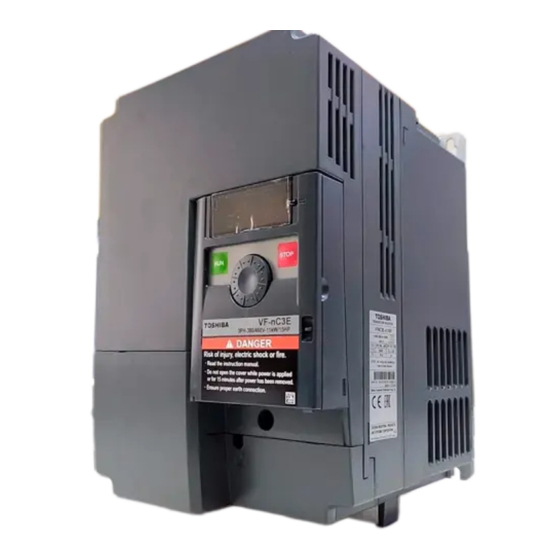
Toshiba TOSVERT VF-nC3E Manuals
Manuals and User Guides for Toshiba TOSVERT VF-nC3E. We have 1 Toshiba TOSVERT VF-nC3E manual available for free PDF download: Instruction Manual
Toshiba TOSVERT VF-nC3E Instruction Manual (253 pages)
Industrial Inverter (For 3-phase induction motors)
Table of Contents
-
Wiring6
-
Disposal9
-
Introduction10
-
1 Read First
14-
-
Outside View16
-
Bottom View16
-
Front View16
-
Wire Size25
-
-
-
Motors26
-
Inverters28
-
Remedies31
-
Installation32
-
-
2 Connection
37 -
3 Operations
49-
-
Coast Stop52
-
-
Resolution60
-
Ammeter60
-
-
-
-
-
-
-
VI Voltage Bias123
-
VI Voltage Gain123
-
DC Braking125
-
Jumping Width127
-
-
Retry Function134
-
Braking Function142
-
PID Control143
-
Integral Gain143
-
-
Auto-Tuning148
-
-
-
Emergency Stop156
-
Over-Torque Trip160
-
-
Free Notes180
-
-
-
3-Wire Operation184
-
Jog Run185
-
Timing Chart188
-
-
-
-
Storage Location247
-
Periodical Check247
-
-
14 Warranty
248 -
16 Appendix
250
Advertisement
Advertisement
